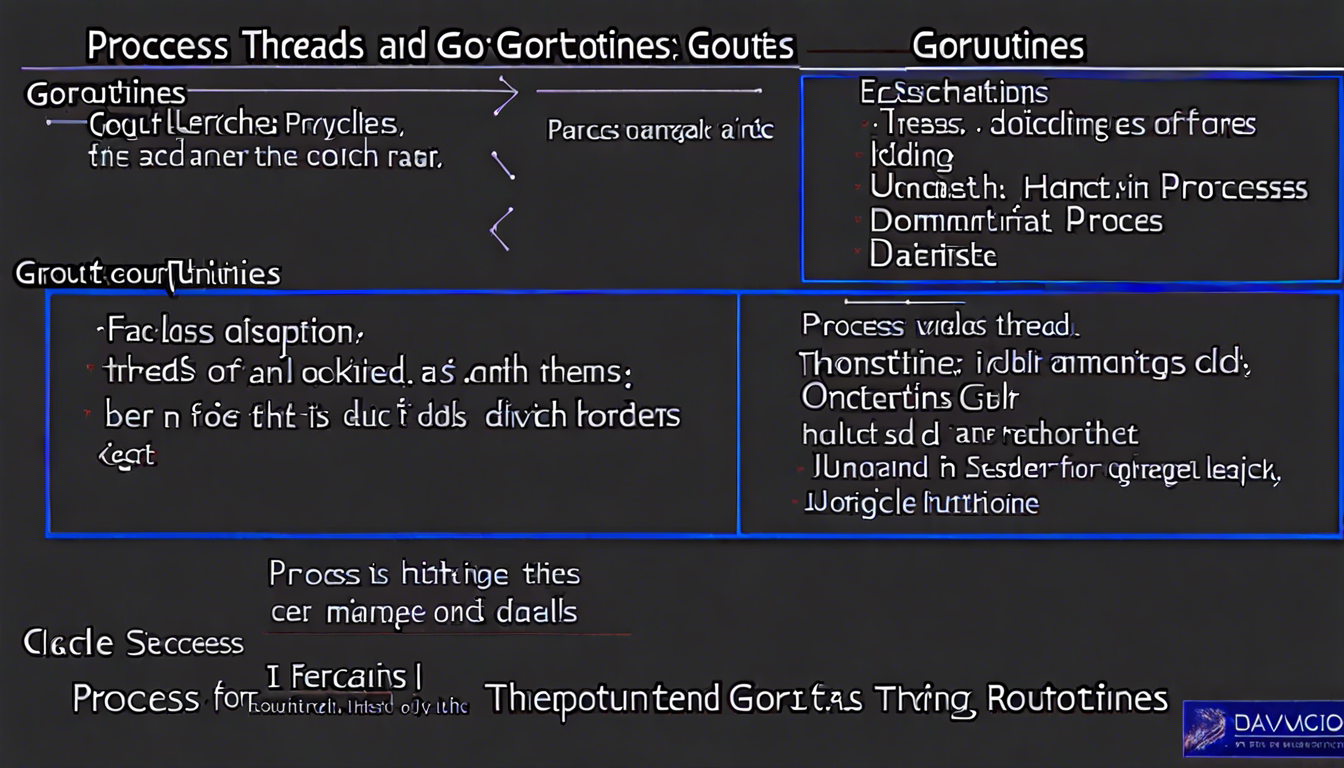Process, Threads and Goroutines
 Swarnnika Raj Singh
Swarnnika Raj Singh
Process:
A process is an instance of a running program on a computer. It consists of the program code, associated data, and resources (such as memory, file handles, and system resources) allocated by the operating system.
Each process is isolated from other processes and runs independently. It has its own memory space and cannot directly access the memory of other processes.
Processes are managed by the operating system's kernel, which schedules their execution, allocates resources, and provides mechanisms for inter-process communication (IPC).
Examples of processes include web browsers, word processors, media players, and system services.
Threads:
A thread is the smallest unit of execution within a process. It represents a single sequence of instructions that can be scheduled and executed by the CPU.
Multiple threads can exist within a single process, sharing the same memory space and resources. Threads within the same process can communicate with each other and share data more efficiently than processes.
Threads enable concurrent execution of tasks within a process, allowing for multitasking and parallelism.
Threads are managed by the operating system's kernel, which schedules their execution on CPU cores and provides synchronization mechanisms for coordinating access to shared resources.
Examples of threads include the main thread of a program, background threads performing I/O operations, and threads handling user interface interactions in graphical applications.
Goroutines (in the context of Go programming language):
Goroutines are a concurrency mechanism in the Go programming language designed for writing concurrent programs with ease.
A goroutine is similar to a thread in other programming languages but is managed by the Go runtime instead of the operating system.
Goroutines are lightweight and have a smaller memory footprint compared to threads, allowing thousands or even millions of goroutines to run concurrently.
Goroutines are multiplexed onto a smaller number of operating system threads, allowing efficient concurrent execution without consuming excessive system resources.
Goroutines communicate and synchronize using channels, a built-in mechanism for safe communication between concurrent goroutines.
Examples of goroutines include concurrent tasks such as processing web requests in a web server, handling concurrent I/O operations, and performing parallel computations.
Subscribe to my newsletter
Read articles from Swarnnika Raj Singh directly inside your inbox. Subscribe to the newsletter, and don't miss out.
Written by

Swarnnika Raj Singh
Swarnnika Raj Singh
Programming isn't just my profession—it's my passion. I'm constantly exploring new languages, frameworks, and technologies to stay at the forefront of innovation. 🎻 When I'm not coding, you can often find me indulging in my other passions. I'm an amature violinist 🎨 In addition to music, I also have a deep appreciation for art, particularly portrait art.